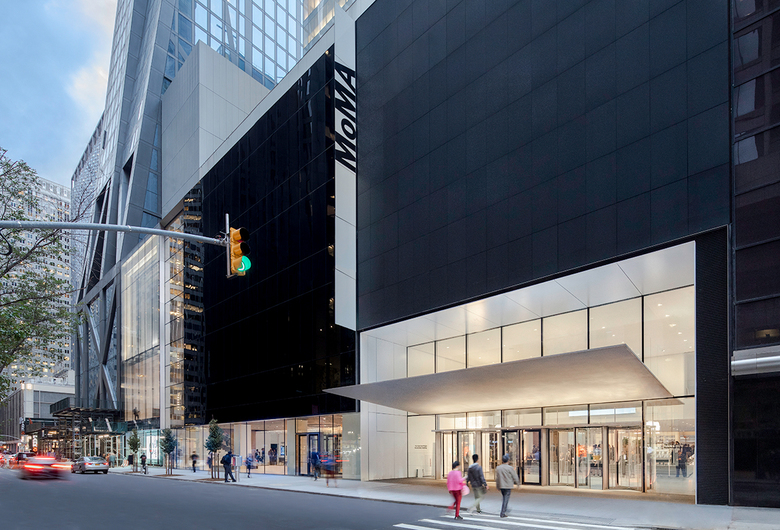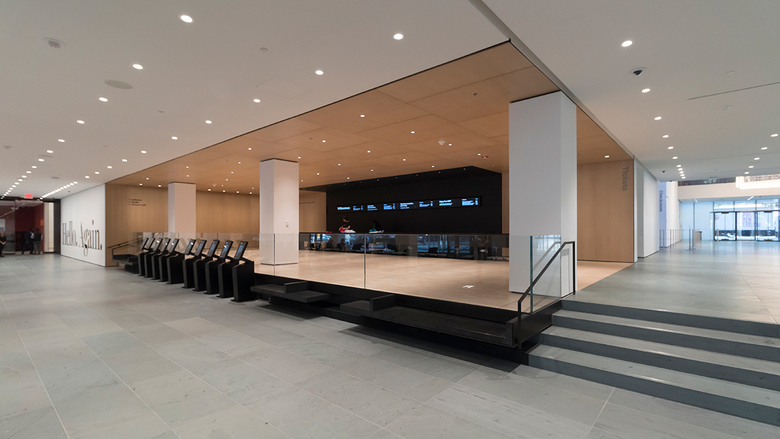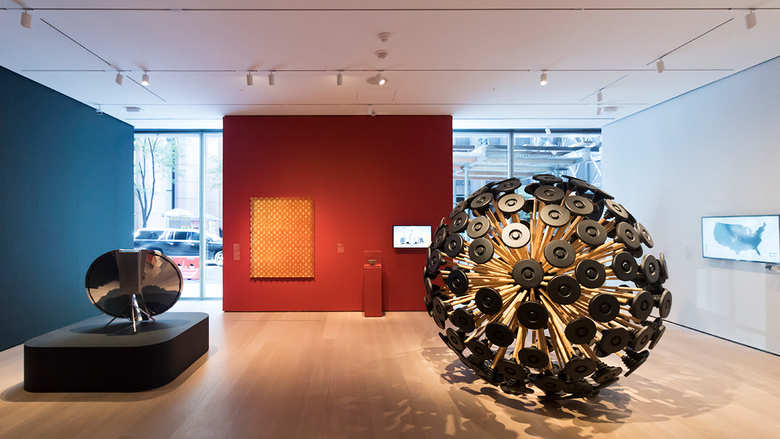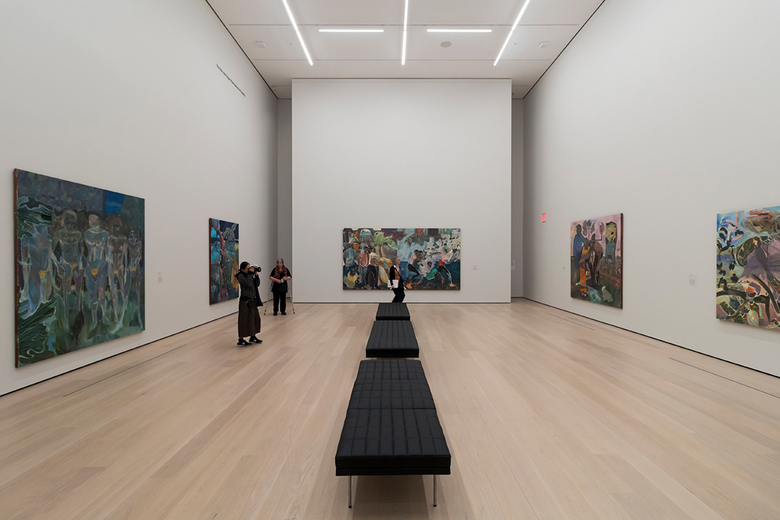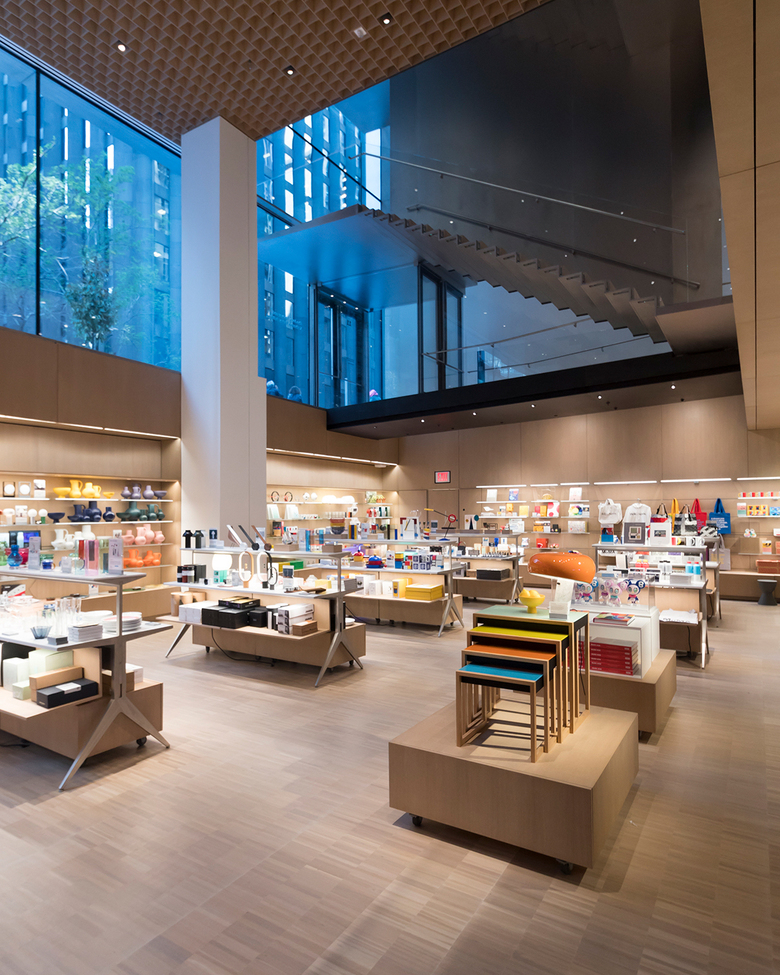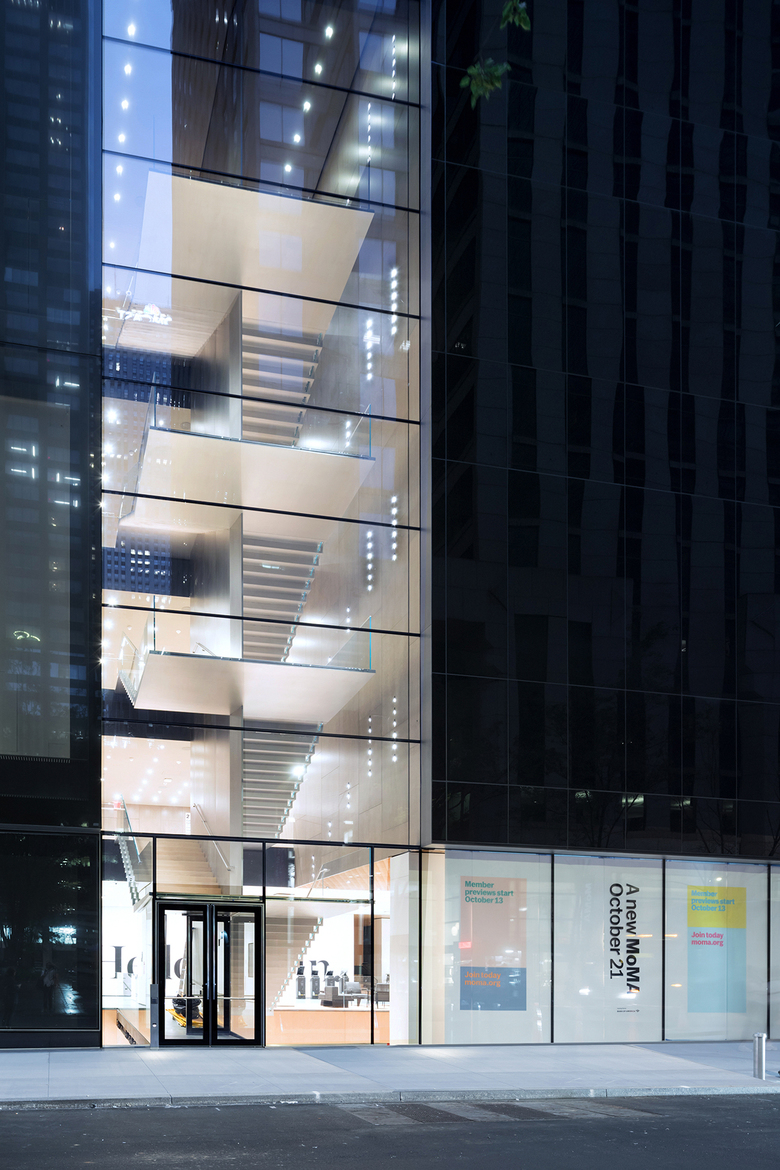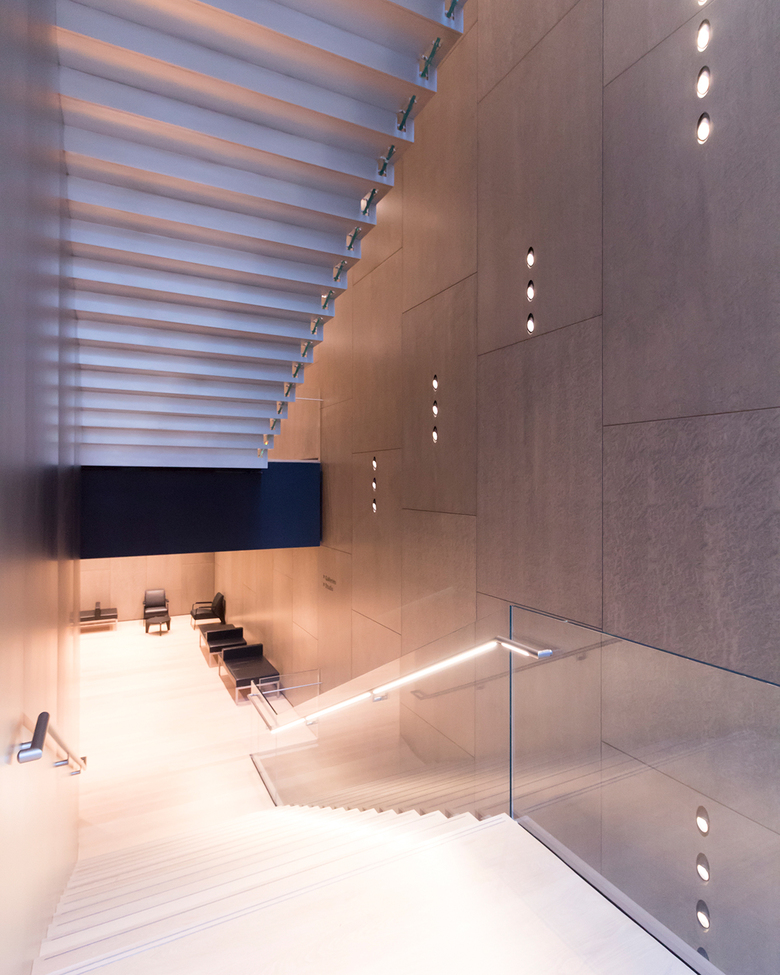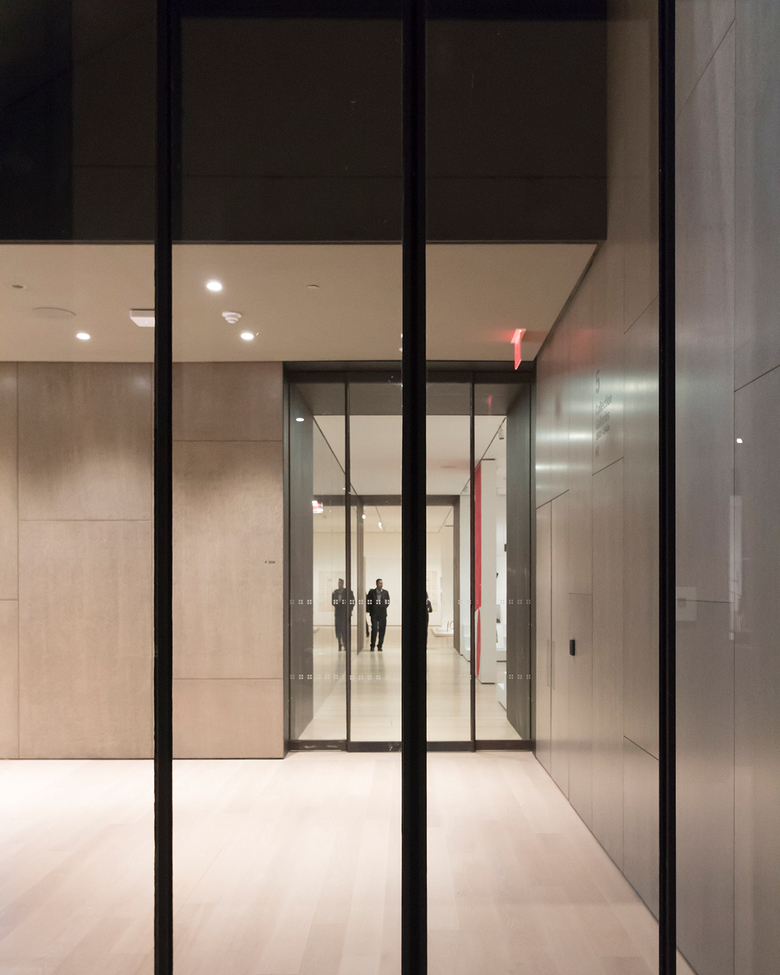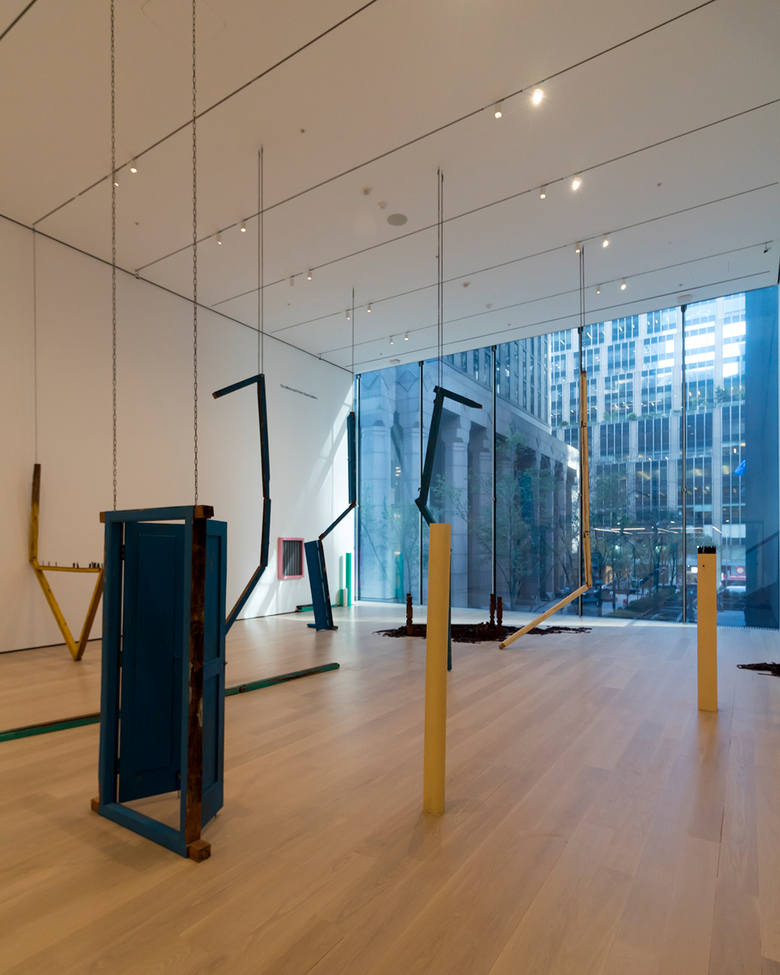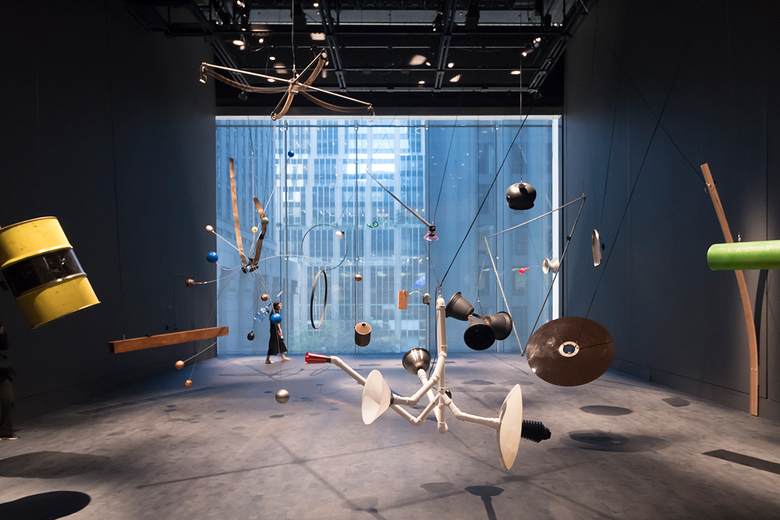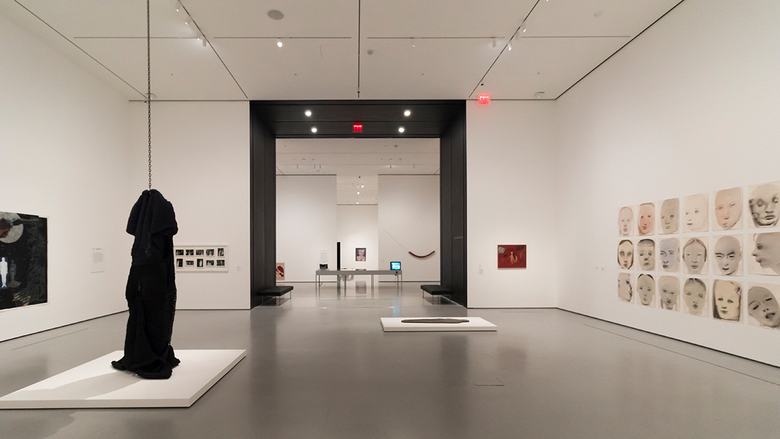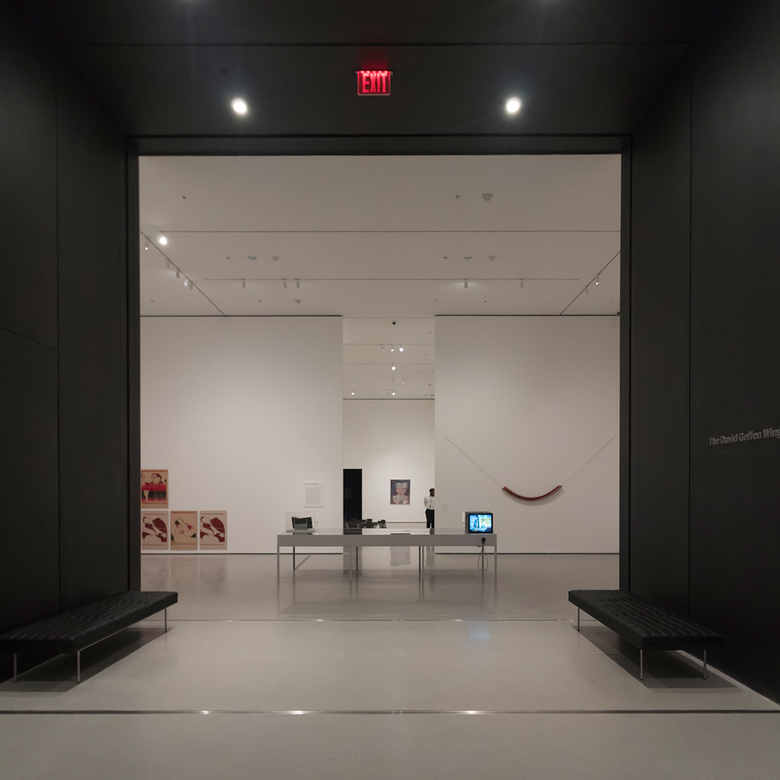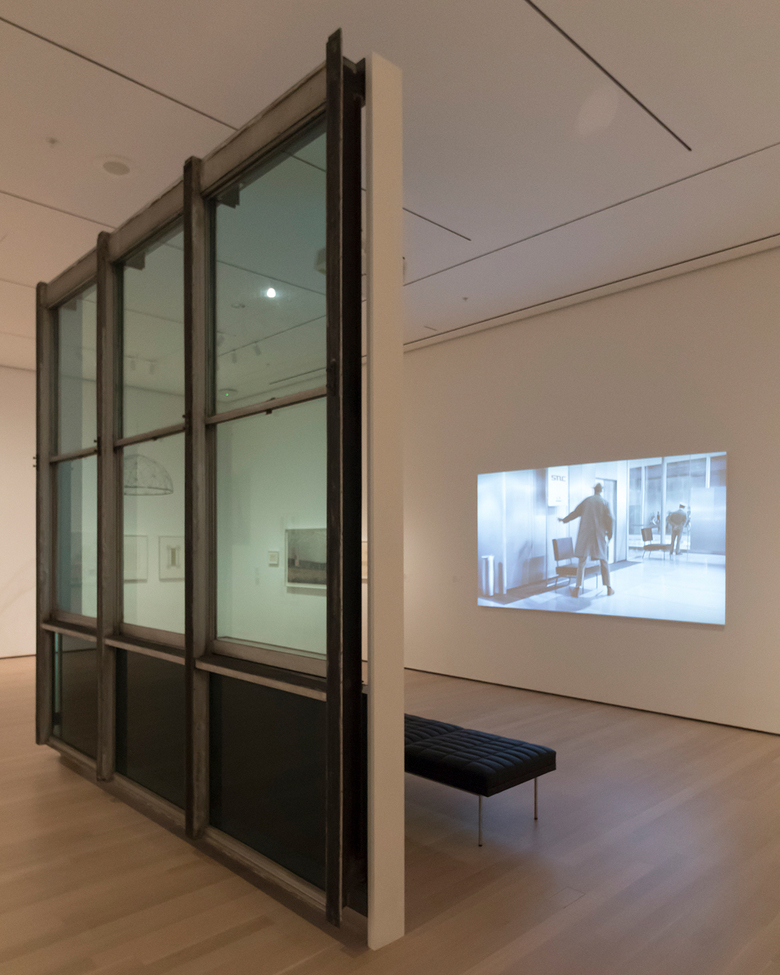Inside the New MoMA
John Hill | 18. oktober 2019
Photo: Brett Beyer, courtesy of Diller Scofidio + Renfro
The Museum of Modern Art opens its much anticipated renovated and expanded galleries on October 21. World-Architects got a peek at the new MoMA designed by Diller Scofidio + Renfro in collaboration with Gensler.
We've covered MoMA latest expansion many times — most recently, last week — ever since DS+R was hired about five years ago to add 30% more gallery space by renovating existing galleries and extending the museum westward into the old Folk Art museum footprint and the base of Jean Nouvel's 53W53 residential tower. Readers can click those links to get some background on the process, but here we focus squarely on what's happening inside the museum. What follows is a photo tour from our visit before crowds flood the new MoMA.
The main entrance is on 53rd Street, under the knife-edge canopy seen in the photo at top. Visitors can also access MoMA from 54th Street, as in this view toward 53rd Street and the second-floor atrium from Yoshio Taniguchi's museum expansion in 2004. (Photo: John Hill/World-Architects)
Those entering from 53rd Street see through to 54th Street (right) but also the new ticket kiosks at left. Most notable in the new MoMA is the fact the whole first floor is free and open to the public, from Philip Johnson's 1953 courtyard on the east to two new galleries on the west. (Photo: John Hill/World-Architects)
A small gallery at the west end of the first floor faces 53rd Street but is accessed from within the museum. For the opening season it is home to Energy, an architecture and design exhibit organized by Paola Antonelli. (Photo: John Hill/World-Architects)
To the north of that ground-floor gallery is a double-height gallery that is also free and open to the public; it is host to Projects 110: Michael Armitage. (Photo: John Hill/World-Architects)
Also free to access is the MoMA Store, which is now one level down from sidewalk level but is brightly illuminated by storefront glazing facing 53rd Street. (Photo: John Hill/World-Architects)
At the west end of the MoMA Store is a new stair — called the blade stair by DS+R — and elevators that lead to the new galleries on levels 2, 4, and 5 (they are also connected to the renovated Taniguchi building internally), as well as restrooms on the third floor and the Terrace Cafê on the sixth floor. (Photo: John Hill/World-Architects)
The blade stair seen from 53rd Street at night. (Photo: Iwan Baan, courtesy of Diller Scofidio + Renfro)
The blade stair seen from inside, with views through the curtain wall to the plaza across 53rd Street. The steel and wood stair is supported by a six-inch thick vertical spine that hangs from the roof structure. (Photo: John Hill/World-Architects)
Another view of the blade stair, showing one of the wood walls that line it. (Photo: John Hill/World-Architects)
The sides of the blade stair are lined with bird's-eye Maple with micro-perforations that are visible when seen up close. (Photo: John Hill/World-Architects)
Automatic sliding glass doors connect the stair to the new galleries in the expansion on the west and the older galleries in the Taniguchi building on the east. (Photo: John Hill/World-Architects)
Gallery 212 sits above the free Energy gallery seen earlier. Both occupy the footprint of the former Folk Art Museum, with 212 displaying Sheela Gowda's Of All People.
Above Gallery 212 is the multimedia Kravis Studio, located on the fourth floor. Rainforest V (variation 1) by David Tudor and Composers Inside Electronics Inc. is one of the most photogenic installations in MoMA's new galleries. (Photo: John Hill/World-Architects)
Richard Serra's Equal occupies Gallery 210, situated in the very southwest corner of MoMA's footprint. The gallery's simple white walls and ceiling and are indicative of the expansion's display spaces. (Photo: John Hill/World-Architects)
One of the most dramatic spaces in the expansion is the darkly framed transition between the galleries in the base of Jean Nouvel's 53W53 tower and those to the east. (Photo: John Hill/World-Architects)
Here, on the second floor, these thickened transitions become spaces to rest while traversing the long chronological circuit MoMA has set up in its maze of interconnected galleries. (Photo: John Hill/World-Architects)
You might be asking, "Is there more architecture on display?" A few architecture offerings are integrated into the circuit of galleries (the Architecture and Design Department no longer has dedicated galleries). In Gallery 216 is Building Citizens, which culls pieces from MoMA's collection that, per the museum, "consider architecture’s capacity to give shape to the social, political, and cultural dimensions of our communities and the worlds they inhabit." (Photo: John Hill/World-Architects)
Upstairs, in Gallery 417, is Architecture Systems, where scenes from Jacques Tati's Playtime loop next to a section of the facade from the United Nations Headquarters. (Photo: John Hill/World-Architects)
Lastly, in Gallery 519, Architecture for Modern Art, are models for MoMA's original 1939 building (and an unbuilt alternative tower version) but also a spectacular one of Frank Lloyd Wright's Guggenheim Museum; its inclusion expresses the fact that MoMA, along with Columbia University, owns the massive archive of Frank Lloyd Wright. (Photo: John Hill/World-Architects)
